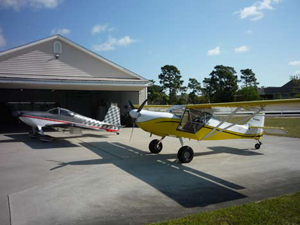Jim Miller's Kitfox 7 By David Gustafson
| The two-seat Kitfox, in all its variations, has become a homebuilding classic. Itís estimated that over 5,000 kits have been shipped worldwide. Thousands have entered the FAA Registry as airworthy copies. Designed by Dan Denney and introduced at Oshkosh in 1984, the original Kitfox, model 1, was small, light and it sported a round bump cowling that gave the aircraft the look of an antique. With its folding wings, it became an instant success, purchased by people who saw something of their childhood in its lines and configuration. Within six years, Denney had built the company up from six employees to 120, and was taking in 70 orders a month. He introduced four models of the basic design and developed an aerobatic version called the Speedster. At one point he converted it to a biplane, but it was never marketed in that configuration. Today, Kitfox Aircraft isowned and operated by John and Debbie McBean who are cranking out kits for the model 7. They also have an LSA version that is ready to fly.
Jim Miller met up with John McBean at
the Sebring trade show in November 2010 and
left with a contract for a model 7 kit. A plumber
by trade, Jim had Six months after the Sebring show, Jim and his wife headed out from their Pilotís Ridge Airpark in a motorhome with a 20í trailer. They picked up their complete kit at the factory and drove it home. Jimís shop, spacious and well equipped with tools from his auto racing days, was converted once again into an aircraft construction zone. He insisted that his friend, Jim Hunter, work on the project for awhile before buying into it. After six weeks Hunter showed up with a check and the partnership was formalized.
Todayís Kitfox kits are far more of an assembly process than a struggle with fabrication. The fuselage structures have always been welded up by the factory, and some of the components like fuel tanks were also welded, but there could be a lot of cutting, bending and riveting with the wings and cockpit area. Jim opted to get wings that were already assembled and just needed wiring, plumbing and control hookup before covering. He was the first to receive wings with the new fiberglass leading edge. His idea was to get the plane to the flightline as quickly as possible. Todayís Kitfox comes with checklists and step by step procedures to make sure the builder does everything in the right sequence and in the right way. Sometimes there are instructions to leave something out or incomplete until later to make sure the parts all go together correctly. Aside from a few very minor issues, Jim and Jim built the plane exactly as the plans called for. It went together much quicker than the RV-7 had, requiring only 1400 hours of build time.
The most labor intensive part of the project was painting. Both Jims wanted to work with Stewart Systems water based paint, but they were working on that part of the project in the winter when heat and airflow were difficult to manage. They wound up finishing it off with Aerothane. The applications, sanding and recoating took a long time and a lot of effort.
The FAA came by and said ďBless, blessĒ on April 10, 2012 and shortly thereafter, Jim Miller fired up the Rotax and took the active. Aside from a minor issue with the radio, the plane met his expectations and performed beautifully. Jim Millerís hangar is in his back yard. The runway is about a mile from the Atlantic shoreline. Heís got 850 tires on his wheels so he can land on the beach and thereís no shortage of sand in North Carolina. The Kitfox will be a perfect complement to Jimís RV. We should all be so lucky. For more information on the Kitfox 7, visit www.KitfoxAircraft.com.
|



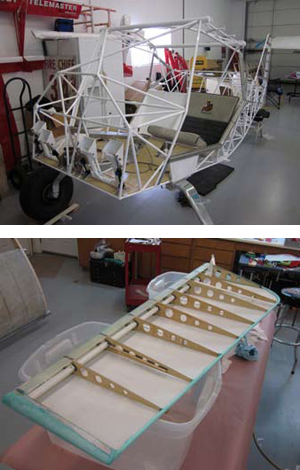 devoted years to building and
racing automobiles before he got involved in an
RV-7 project with one of the numerous aviation
partners heís had over the years. He started the
RV-7 in 2002 and flew it in 2004. Then he ran
across a Rans S7-S Courier project that was half
built and for sale. Jim picked it up, got another
partner, finished and flew the aircraft in 2009.
Then he sold his interest in the aircraft to his
partner, who was moving out of the area. He still
had the RV-7, but wanted something that was
open, low and slow. Jim Hunter had seen the
Rans go together and told Jim that he wanted a
piece of the next project.
devoted years to building and
racing automobiles before he got involved in an
RV-7 project with one of the numerous aviation
partners heís had over the years. He started the
RV-7 in 2002 and flew it in 2004. Then he ran
across a Rans S7-S Courier project that was half
built and for sale. Jim picked it up, got another
partner, finished and flew the aircraft in 2009.
Then he sold his interest in the aircraft to his
partner, who was moving out of the area. He still
had the RV-7, but wanted something that was
open, low and slow. Jim Hunter had seen the
Rans go together and told Jim that he wanted a
piece of the next project.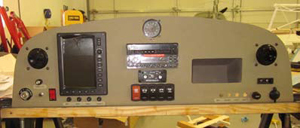
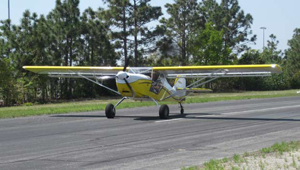
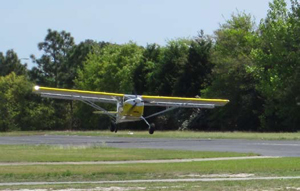 Their instrument panel is a picture of simplicity: a Garmin GX-3, Mode S transponder, SL40 com,
Taxiing out for the first flight.
an intercom mixer,
compass and a few circuit
breakers. All of the engine
instruments are in the GX-
3, along with an HSI, GPS,
moving map, airspeed,
altitude, ROC, etc. Thereís
a lot of empty panel space,
and yet, for what they
both have in mind, thereís
more than enough for all
the fun flying they intend
to do.
Their instrument panel is a picture of simplicity: a Garmin GX-3, Mode S transponder, SL40 com,
Taxiing out for the first flight.
an intercom mixer,
compass and a few circuit
breakers. All of the engine
instruments are in the GX-
3, along with an HSI, GPS,
moving map, airspeed,
altitude, ROC, etc. Thereís
a lot of empty panel space,
and yet, for what they
both have in mind, thereís
more than enough for all
the fun flying they intend
to do.